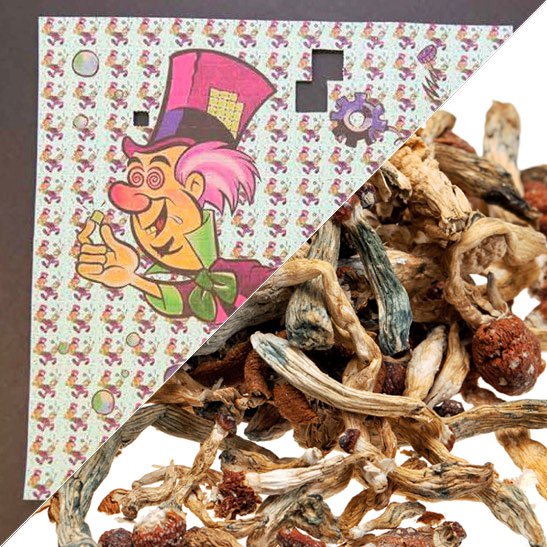All About Psychotomimetic Compounds: Their Function in Psychological Research
Psychotomimetic compounds, such as LSD and psilocybin, have actually amassed enhancing interest in psychological research for their capacity to replicate psychotic symptoms and supply understanding into different psychological health and wellness conditions. Their interactions within the brain, especially through serotonin and dopamine pathways, suggest a complex partnership in between awareness and neurobiology that might open novel therapeutic avenues. As researchers continue to explore their possible applications, ethical considerations bordering their use in clinical setups come to be vital, raising vital inquiries regarding security and informed approval that call for more exploration.
Interpretation of Psychotomimetic Compounds
In the world of psychological study, psychotomimetic substances are compounds that can generate results looking like those of psychosis, such as hallucinations, deceptions, and altered understandings of reality - About Golden Psycho. These compounds can be identified right into different groups, including hallucinogens, dissociatives, and specific energizers, each generating unique emotional impacts
The medicinal action of psychotomimetic compounds commonly includes inflection of natural chemical systems, especially those relevant to serotonin, dopamine, and glutamate. For circumstances, materials like lysergic acid diethylamide (LSD) mostly act upon serotonin receptors, bring about profound modifications in sensory understanding and cognition.
The utility of psychotomimetics in research study hinges on their ability to mimic psychotic symptoms, offering a design for understanding the underlying mechanisms of psychotic problems such as schizophrenia. By examining the results of these substances, researchers can get understandings into the neurobiological and mental processes that add to psychosis.
Moreover, psychotomimetic compounds have actually been checked out for their therapeutic possibility in dealing with different mental wellness problems, consisting of depression and anxiety, highlighting their double function in both research and possible scientific applications.
Historic Development and Context
The exploration of psychotomimetic compounds has a rich historic context that goes back to ancient people, where substances such as psilocybin mushrooms and peyote were used in spiritual and recovery practices. These early usages typically linked with spiritual routines, suggesting a profound respect for the modified states of consciousness caused by these compounds.
The mid-20th century noted a significant pivotal moment in the research of psychotomimetic materials, particularly with the synthesis of LSD by Albert Hofmann in 1938. The succeeding popularization of LSD in the 1960s militarized a wave of rate of interest in both its psychological results and prospective therapeutic applications. Researchers started to explore just how these compounds can resemble psychotic states, giving insights right into psychological health problem.
Nevertheless, the enhancing organization of psychotomimetics with counterculture activities caused regulative backlash, culminating in the criminalization of most of these compounds. Regardless of these difficulties, the renewal of interest in the restorative potential of psychedelics in the 21st century has actually prompted renewed study. This historic trajectory highlights the evolving perception of psychotomimetic substances, transforming from spiritual materials to subjects of scientific query and, possibly, healing guarantee.
Systems of Action
Understanding the mechanisms of activity of psychotomimetic substances reveals the detailed methods these materials communicate with the mind's neurochemistry. These compounds mostly exert their effects through modulation of natural chemical systems, especially serotonin, dopamine, and glutamate.
Along with serotonin, dopaminergic paths are dramatically influenced by compounds like mescaline and particular cannabinoids, which can bring about transformed states find out here of awareness and adjustments in mood and motivation. Additionally, the NMDA receptor enmity observed with materials like ketamine highlights another path via which psychotomimetics might generate dissociative states and profound alterations in believed processes.
The neurochemical cascades initiated by these interactions lead to facility and complex emotional results. Recognizing these mechanisms is essential for both the innovation of mental research study and the healing potential of psychotomimetic substances, as they provide understandings right into the underlying neural correlates of transformed states of awareness.
Current Study and Applications
Current investigations right into psychotomimetic substances have exposed a rebirth of interest in their healing applications, especially in the fields of psychiatry and psychology. Scientists have started exploring substances such as psilocybin, LSD, and ayahuasca for their prospective to alleviate signs related to various psychological health problems, including clinical depression, anxiety, and PTSD.
Scientific tests have actually demonstrated that, when administered in regulated atmospheres, these substances can assist in profound emotional experiences, advertising emotional developments and boosted therapeutic outcomes. For circumstances, researches have shown that psilocybin-assisted therapy can lead to significant reductions in treatment-resistant clinical depression, with results lasting for numerous months post-treatment.
In addition, psychotomimetic substances are being reviewed for their capacity to promote neuroplasticity, potentially enabling even more reliable rewiring of maladaptive idea patterns. These searchings for suggest that such compounds may function as adjuncts to typical psychotherapeutic approaches, boosting the efficiency of restorative interventions.
As research advances, the focus is shifting towards recognizing the optimum dosages, restorative setups, and participant qualities that can optimize the benefits of these substances. This burgeoning area holds guarantee other for reinventing mental health therapy standards and attending to the constraints of conventional psychiatric medications.
Ethical Considerations in Research Study

Navigating the moral landscape of research study entailing psychotomimetic compounds is important to ensuring individual safety and the stability of research outcomes. Researchers must focus on informed consent, ensuring that participants totally understand the prospective dangers and benefits connected with the materials being studied. This includes offering in-depth details concerning possible psychological effects, consisting of intense and long-lasting influences, and permitting participants the possibility to withdraw from the study at any moment scot-free.
In addition, honest oversight by institutional evaluation boards (IRBs) is vital. IRBs assess research methods to guard participant welfare and support ethical requirements. This analysis assists minimize threats and makes certain that studies are conducted with clinical roughness. In addition, the potential for browbeating should be look at these guys thoroughly analyzed, specifically when susceptible populations are involved.
Privacy is an additional critical consideration. Scientists must execute durable procedures to secure individuals' identifications and data, specifically offered the delicate nature of experiences connected with psychotomimetic compounds (About Golden Psycho). Eventually, a commitment to ethical practices not only cultivates trust fund between researchers and participants but also improves the trustworthiness and legitimacy of the research study end results, adding to the development of emotional understanding

Conclusion
To conclude, psychotomimetic compounds, specifically timeless psychedelics such as LSD and psilocybin, deal substantial insights right into psychological problems via their one-of-a-kind devices of activity. Their restorative potential in attending to problems like anxiety and PTSD highlights the significance of continued research study in this area. However, guaranteeing ethical criteria in study methods is vital for individual security and informed authorization, permitting an accountable exploration of these substances' benefits and implications within psychological scientific research.